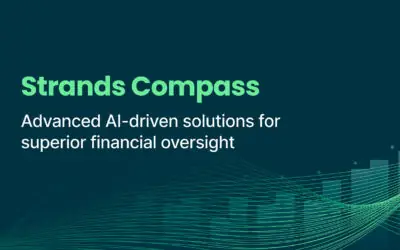- Embedded Finance is the integration of financial services into non-financial products and services, enabling companies and financial institutions to generate new revenue streams.
- Thanks to secure APIs, Embedded finance allows people to access financial services on one platform, increasing convenience and efficiency when it comes to managing their everyday lives and business operations.
- Open Finance enables a wide range of use cases that help us build the perfect view of the user’s life for financial entities, improving the user experience and increasing loyalty and engagement through the application.
Embedded finance is rapidly gaining traction in the financial industry. According to Business Insider, embedded finance companies, including the ones pivoting into the trend, will reach a market cap of $7.2 trillion globally by 2030. But what is Embedded Finance really, and how does it relate to other trends like Open Banking and Open Finance?
What is embedded finance?
Embedded Finance refers to the integration of financial services into non-financial products and services. Its infrastructure enables customer-facing digital platforms (the “anchor platforms”) to “embed” financial services into themselves. This allows companies to offer financial services and products to their customers, generating new revenue streams, without having to invest in their own financial infrastructure.
Banks can leverage the innovative expertise of fintech companies to elevate their embedded finance offerings, or foster partnerships with non-financial companies, which can significantly help them expand their reach.
A secure connection via APIs
Embedded Finance has the power to integrate financial products directly into non-financial digital applications via the secure data exchange of APIs (Application Programming Interfaces). From “buy now, pay later” or opening bank accounts to managing business invoices, Embedded Finance gives financial players the chance to offer customers access to the widest range of services – all in one interface.
Powering endless opportunities
Digital platforms are in a position to serve their retail and SME customers on a deeper level than ever before, and in ways that traditional financial institutions need to level up to. According to a study by Ross Republic, the majority of e-commerce SMEs prefer to get loans via the tools they use to run their business, such as e-commerce marketplaces or payment providers, when these enable a quicker and more seamless customer journey. Embedded finance allows them to access financial services directly through these channels, increasing convenience and efficiency when it comes to managing their business operations.
Thanks to APIs, financial institutions can seamlessly connect their digital platforms to an incredible range of products and services, and gain a competitive edge to offer the same level of experiences as new incumbents.
From Open Banking to Open Finance
Open Finance branches upon Open Banking and presents opportunities for a broader category of capabilities than the latter. As inferred by the name, Open Banking relates more specifically to banking capabilities, whereas Open Finance relates to the broader financial life of an individual or business.
To lead up to Embedded Finance
Open Banking and Open Finance are concepts that evolve in great synergy in the financial services industry, leading up to Embedded Finance. Going one step above the capabilities offered by Open Banking and Open Finance, Embedded Finance integrates banking capabilities into non-financial services. It’s all about leveraging the capabilities and protocols enabled by Open Banking and using them to embed services into the customer journey to enhance and innovate customer journeys. Embedded Finance streamlines banking capabilities into consumers’ everyday processes.
Meet Strands’ Open Finance solution
Strands Open Hub offers a single interface from which to connect to external services in an easy and secure way, offering a clear overview of one’s finances.
Open Finance enables a wide range of use cases that helps us build the perfect view of the user’s life for financial entities, improving the user experience and increasing loyalty and engagement through the application.
- By integrating Open Banking capabilities within our PFM solution, we enhance the collaboration with our third-party aggregation partners so that end users can connect multiple bank accounts in one place.
- By integrating Open Finance capabilities within our BFM solution, we enable SMEs to connect their invoicing providers, selecting the best aggregators in each geographic region to provide the highest coverage.
Want to find out more about how you can benefit from our Open Finance solution?



